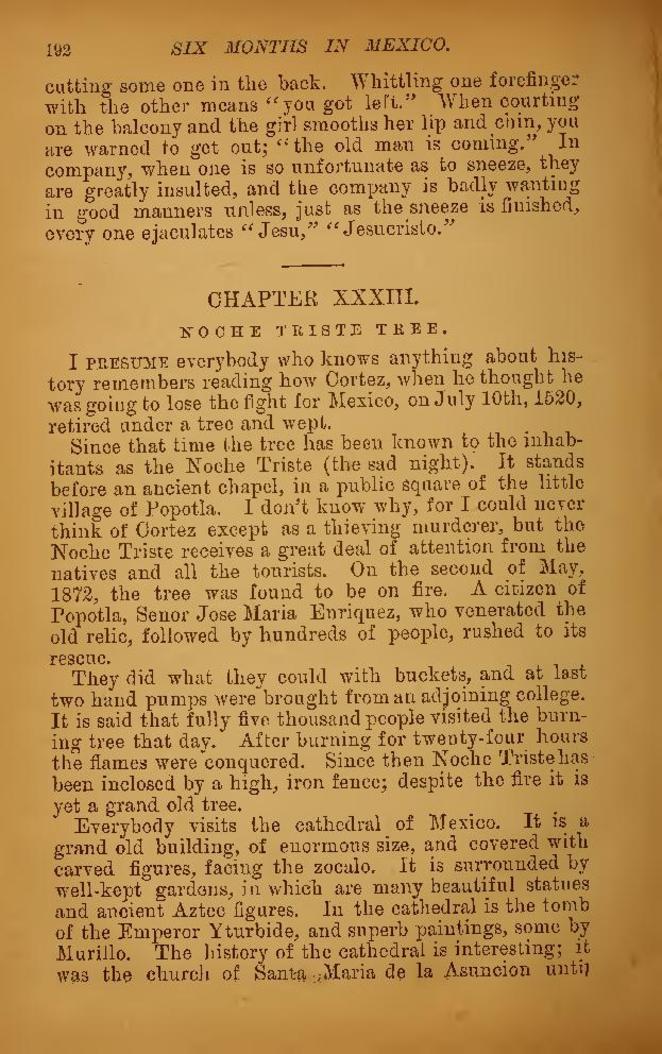cutting some one in the back. Whittling one forefinger with the other means “you got left." When courting on the balcony and the girl smooths her lip and chin, you are warned to get out; “the old man is coming." In company, when one is so unfortunate as to sneeze, they are greatly insulted, and the company is badly wanting in good manners unless, just as the sneeze is finished, every one ejaculates "Jesu," "Jesucristo."
CHAPTER XXXIII.
NOCHE TRISTE TREE.
I presume everybody who knows anything about history remembers reading how Cortez, when he thought he was going to lose the fight for Mexico, on July 10th, 1520, retired under a tree and wept.
Since that time the tree has been known to the inhabitants as the Noche Triste (the sad night). It stands before an ancient chapel, in a public square of the little village of Popotla. I don't know why, for I could never think of Cortez except as a thieving murderer, but the Noche Triste receives a great deal of attention from the natives and all the tourists. On the second of May, 1872, the tree was found to be on fire. A citizen of Popotla, Senor Jose Maria Enriquez, who venerated the old relic, followed by hundreds of people, rushed to its rescue.
They did what they could with buckets, and at last two hand pumps were brought from an adjoining college. It is said that fully five thousand people visited the burning tree that day. After burning for twenty-four hours the flames were conquered. Since then Noche Triste has been inclosed by a high, iron fence; despite the fire it is yet a grand old tree.
Everybody visits the cathedral of Mexico. It is a grand old building, of enormous size, and covered with carved figures, facing the zocalo. It is surrounded by well-kept gardens, in which are many beautiful statues and ancient Aztec figures. In the cathedral is the tomb of the Emperor Yturbide, and superb paintings, some by Murillo. The history of the cathedral is interesting; it was the church of Santa Maria de la Asuncion until
